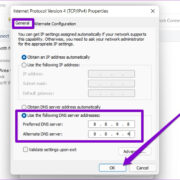Understanding the relative size or value of one number in comparison to another is a basic yet crucial mathematical concept. It’s a tool we use frequently, sometimes without even realizing it. For instance, when gauging the magnitude of an earthquake or comparing the populations of two cities, we’re assessing how many times greater one figure is than another. Despite its simplicity, this concept can cause confusion for some. This guide is tailored specifically for those who may not have a strong technical or mathematical background, aiming to make the process as straightforward as possible.

Online Ratio Calculator
Many websites offer online calculators that can easily determine how many times greater one number is than another. One such utility is a ratio calculator, which is specifically designed to compare two numbers.
- Visit a website that provides a ratio calculator.
- You will see two input fields; enter the larger number in the first field and the smaller number in the second field.
- Click the ‘Calculate’ or ‘Find Ratio’ button.
- The result will display how many times greater the first number is than the second.
Summary
This solution is user-friendly and quick, suitable for those who need immediate answers without involving manual calculations. However, its accuracy depends on the quality of the website’s calculator, so choosing a reputable online tool is crucial.
Spreadsheet Program
Spreadsheet programs like Microsoft Excel or Google Sheets are powerful tools for performing a wide variety of calculations, including finding out how many times greater one number is.
- Open your chosen spreadsheet program.
- Enter the larger number in one cell (for example, A1).
- Enter the smaller number in the adjacent cell (for example, A2).
- In a third cell, divide the larger number by the smaller number using the formula “=A1/A2”.
- Press Enter, and the result will show how many times greater the number in A1 is compared to A2.
Summary
Using a spreadsheet program is advantageous because it provides a visual record of your calculations and can handle large sets of data. However, it requires basic knowledge of how to use the software.
Traditional Calculator
For those who are comfortable with manual calculations and have a traditional pocket calculator at hand, this method is a viable option.
- Turn on the calculator.
- Type in the larger number.
- Press the division sign (/).
- Type in the smaller number.
- Press the equals sign (=) to get the result.
Summary
Using a traditional calculator is a straightforward, portable alternative, especially if you’re calculating on-the-go. Conversely, it’s less convenient for multiple, repeated calculations compared to digital methods.
Mobile App
Numerous mobile applications can perform this simple calculation, providing a handheld solution that’s often more convenient than using a website or traditional calculator.
- Download and install a calculator app from your device’s app store.
- Open the app and enter the larger number.
- Select the division function.
- Enter the smaller number.
- Hit the equals button or similar to view the result.
Summary
The benefit of using a mobile app is its accessibility; you can carry out calculations anywhere at any time. However, the downside might be the need to install new software on your device.
Mental Math
For those who prefer or enjoy calculating in their heads, mental math is a great way to determine how many times greater one number is compared to another.
- Understand that you are looking to divide the larger number by the smaller one.
- Estimate the multiples of the smaller number that would add up to the larger one.
- Count the multiples to get an approximate figure of how many times greater the larger number is.
Summary
Mental math enhances cognitive abilities and doesn’t rely on any tools. However, it’s less accurate and more mentally taxing, particularly with larger numbers.
Math Games and Tools for Kids
Interactive games and educational tools can be very beneficial for teaching children this concept in an engaging manner.
- Find an educational website or app that features math games.
- Look for a game that involves division or ratio determination.
- Let the child play the game, guiding them to understand how the division demonstrates the concept of one number being multiple times greater than another.
Summary
Games make learning fun and interactive, especially for children. They may, however, be too simplistic for adults or more complex calculations.
Math Tutorials on Video Platforms
Video platforms like YouTube have numerous tutorials that can help explain and demonstrate how to calculate one number being many times greater than another.
- Go to a video platform.
- Search for a tutorial on ratios or division.
- Watch the video, pausing and replaying sections as necessary to fully understand the concept.
- Follow along with the exercises provided in the tutorial.
Summary
Video tutorials provide visual and auditory learning opportunities, which can be more effective for some learners. The downside is that it may take longer to find a good tutorial than to perform the calculation manually.
Use of Proportional Reasoning
Understanding proportions is a fundamental part of realizing how many times one number is greater than another.
- Recognize that you’re dealing with a proportional relationship between two numbers.
- Conceptually divide the larger number by the smaller one to find the proportion.
- Use examples to perceive the concept better, such as money or distances.
Summary
Proportional reasoning does not necessitate any special tools and strengthens conceptual understanding, but might not be as straightforward for everyone.
Educational Workbooks
Educational workbooks can be a useful resource for learning how to perform these calculations through practice.
- Purchase an educational workbook from an online retailer or bookstore.
- Complete the exercises related to division or proportions.
- Check your answers against the solutions provided to ensure understanding.
Summary
Workbook exercises reinforce learning through repetition and can be a great way to memorize mathematical processes. They do, however, entail a cost and may not appeal to everyone.
Consulting with a Math Tutor
If you find this subject particularly challenging, it might be worth consulting with a tutor.
- Look for a reputable tutor or tutoring service.
- Schedule a session focusing on division and ratios.
- Follow the tutor’s guidance to improve your understanding of the calculations.
Summary
Personalized tutoring offers targeted assistance and can rapidly improve understanding and skills, but it is also the most costly option compared to others listed.
In conclusion, there are numerous solutions available to help individuals understand how many times greater one number is than another, each with its own set of advantages and disadvantages. By exploring these options, you can choose the one that best suits your learning style and needs.
FAQs
1. What does it mean when one number is “times greater” than another?
When one number is said to be “times greater” than another, it means that you could multiply the smaller number by a certain factor (that’s the “times” part) to equal the larger number.
2. Why is it important to know how many times greater one thing is than another?
Knowing how many times greater one thing is than another can help in making comparisons and informed decisions. It’s a concept used in many fields, including finance, science, and everyday life.
3. Can I use these techniques for comparing things other than numbers?
While the focus of these techniques is numerical, the concept of comparison can extend to objects with quantifiable attributes. For example, you might compare the volume of liquids or the weight of objects using these methods.









